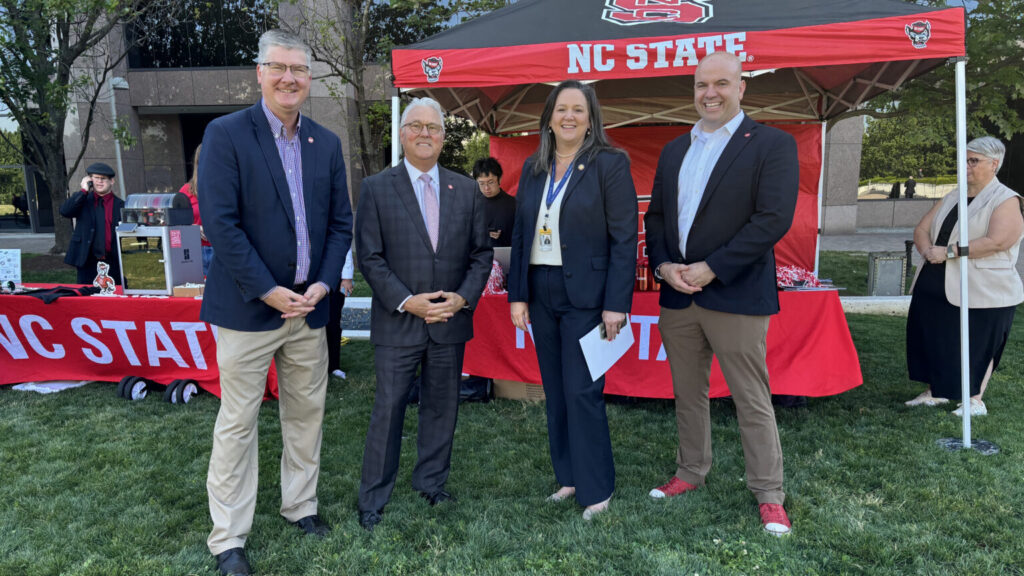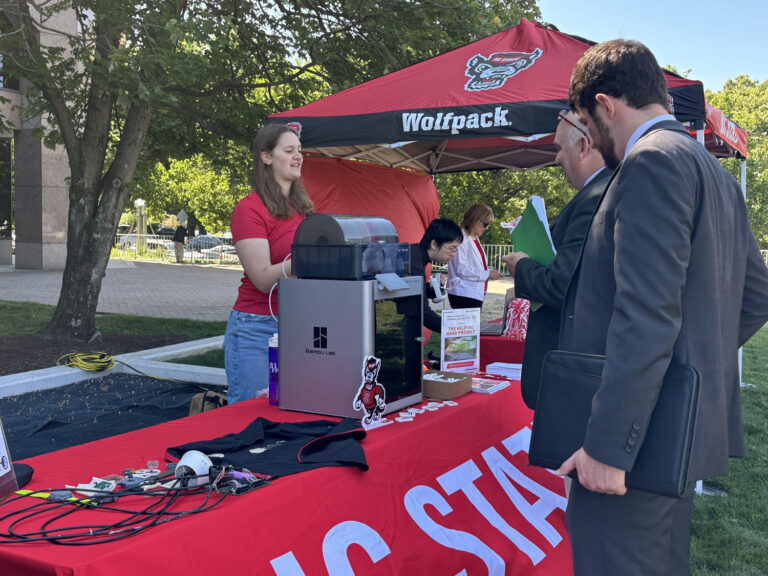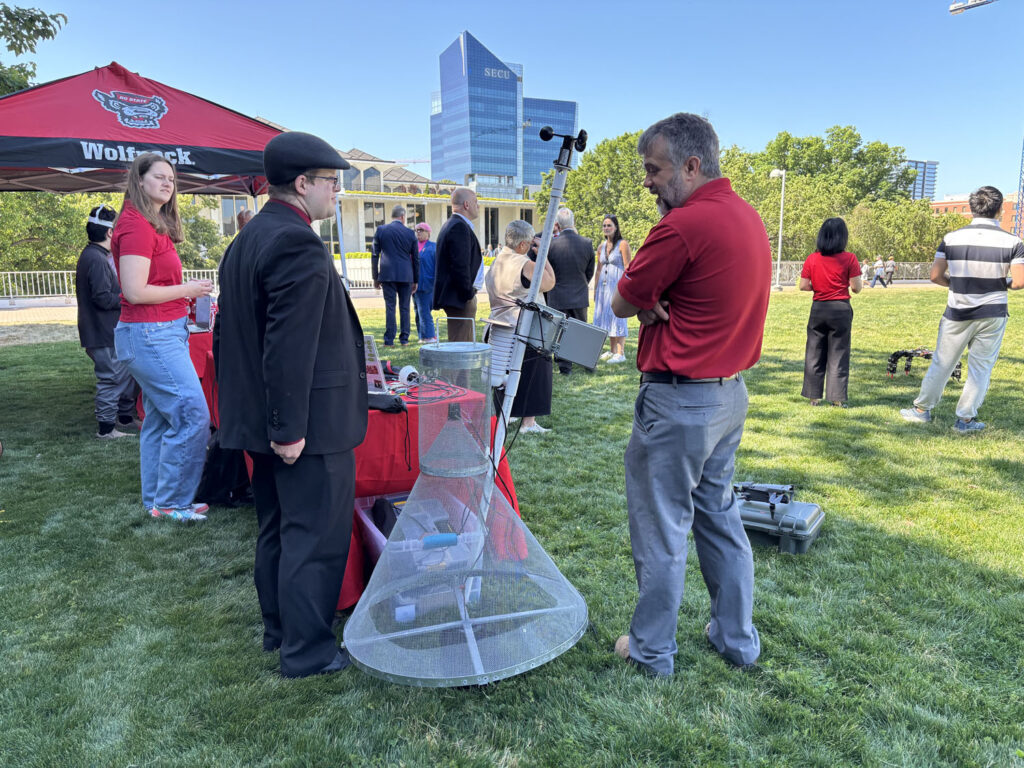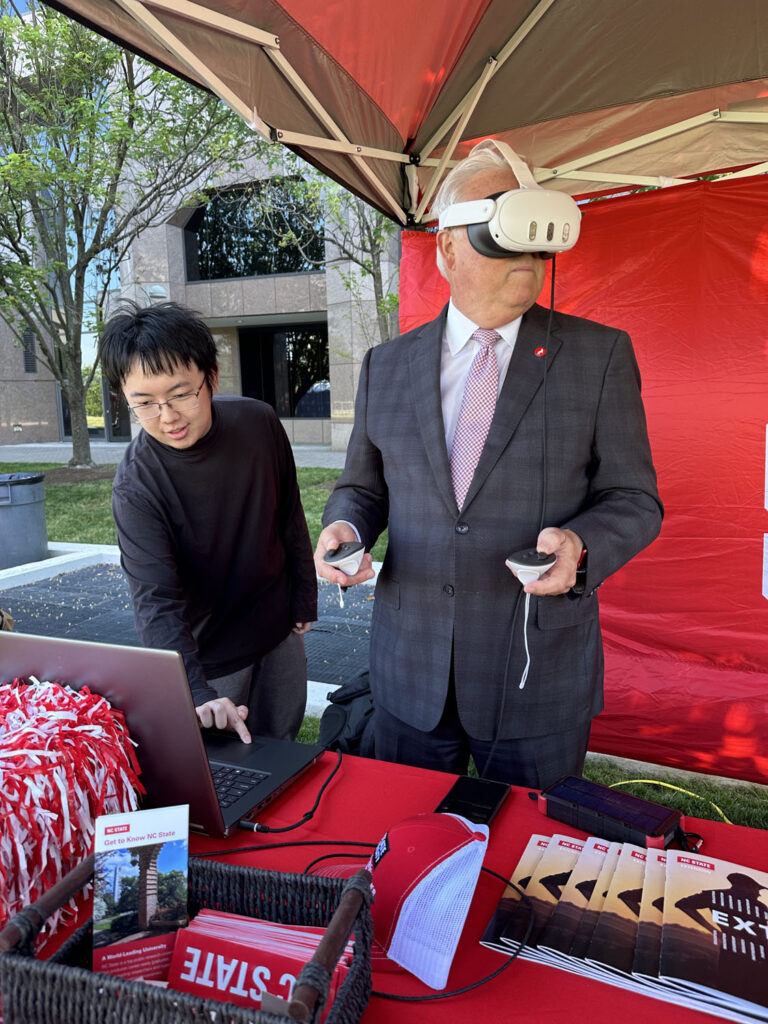This is an article originally written by Nicole Zelniker. May 9, 2025

North Carolina State University students, faculty and alumni came out to represent the College of Engineering for the University of North Carolina System Day at the General Assembly.
Among the mascots and merriment, representatives from different College of Engineering departments displayed new and updated technology in downtown Raleigh.
“Some of the fastest-growing industries in the state are manufacturing, biotechnology and tech sectors,” said Jim Pfaendtner, the Louis Martin-Vega Dean of Engineering. “The College of Engineering is here to provide the highly skilled workforce for these industries and we are greatly appreciative of vital support from the General Assembly as we continue to expand the education of North Carolina’s engineers.”
Emily Berg, a recent graduate in the Edward P. Fitts Department of Industrial and Systems Engineering (ISE), demonstrated one of the 3D printers from the Center for Additive Manufacturing and Logistics (CAMAL) at NC State’s booth. She printed more than 100 bottle openers over the course of the event.

“You see the filament that’s going in and being extruded,” she explained. “We have resin as well as nylon powder, and then we also have metal 3D printing, which is really cool.”
CAMAL, which was created in 2014 out of ISE’s and NC State’s strong manufacturing tradition, is among the leading U.S.-based manufacturing and education centers. Berg is now the polymer manager for CAMAL.
In recent years, 3D printing has made production faster and more cost-effective. Advanced manufacturing practices are now more accessible to small businesses in addition to larger corporations. 3D printing also reduces waste compared to more traditional production methods.
The Department of Electrical and Computer Engineering (ECE) brought a device used to trap and count invasive earworm moths, which are resistant to many pesticides. Each moth lays between 500 and 3,000 eggs. They eat all kinds of crops, including corn, lettuce and sweet potato.
This new device will save researchers hours of time that would have been spent counting moths to alert farmers about significant infestations and allow them to take action against the moths damaging their crops.

“It’s a major pest problem that damages hundreds of thousands of dollars in crops each year, and the extension, as part of North Carolina State University’s land grant mandate, has these traps deployed all across the state,” said James Reynolds, assistant research professor in ECE.
In North Carolina, agriculture is a top industry, contributing $111.1 billion to the state’s economy and supporting nearly 700,000 jobs. The state’s reliance on agriculture as an industry makes pest control research and technology like Reynolds’ vital.
“Beyond that, we can now add all sorts of sensors to understand what’s going on in the environment,” he said. “So say the wind factors, soil moisture, temperature and humidity.”
Reynolds works within the Advanced Self-Powered Systems of Integrated Sensors and Technology (ASSIST), the Institute for Connected Sensor-Systems (IConS) and the Plant Sciences Initiative (PSI). ASSIST and IConS are both dedicated to creating self-powered sensing and communication systems to improve healthcare, agriculture and more. PSI facilitates interdisciplinary research between the COE and the College of Agriculture and Life Sciences.
“Now we can tell the entomologist exactly when they’ve come through and what the conditions were. In the long term, the hope is that we can have these deployed across North Carolina, and we can model what’s going on across the different environmental factors.”
The beams on the traps detect movement into the trap, which Reynolds showed by having visitors lightly touch the sensors.

Finally, the ECE department brought a virtual reality simulator in which the user could farm crops. Former Chancellor Randy Woodson, whose term ended on May 4, tested the device with the help of students who worked on the simulation.
“I think it was a great day overall,” Reynolds said. “I’ve been doing public outreach for the university for almost a decade now, and I enjoy being able to show people the advances we’re making to improve our society.”
